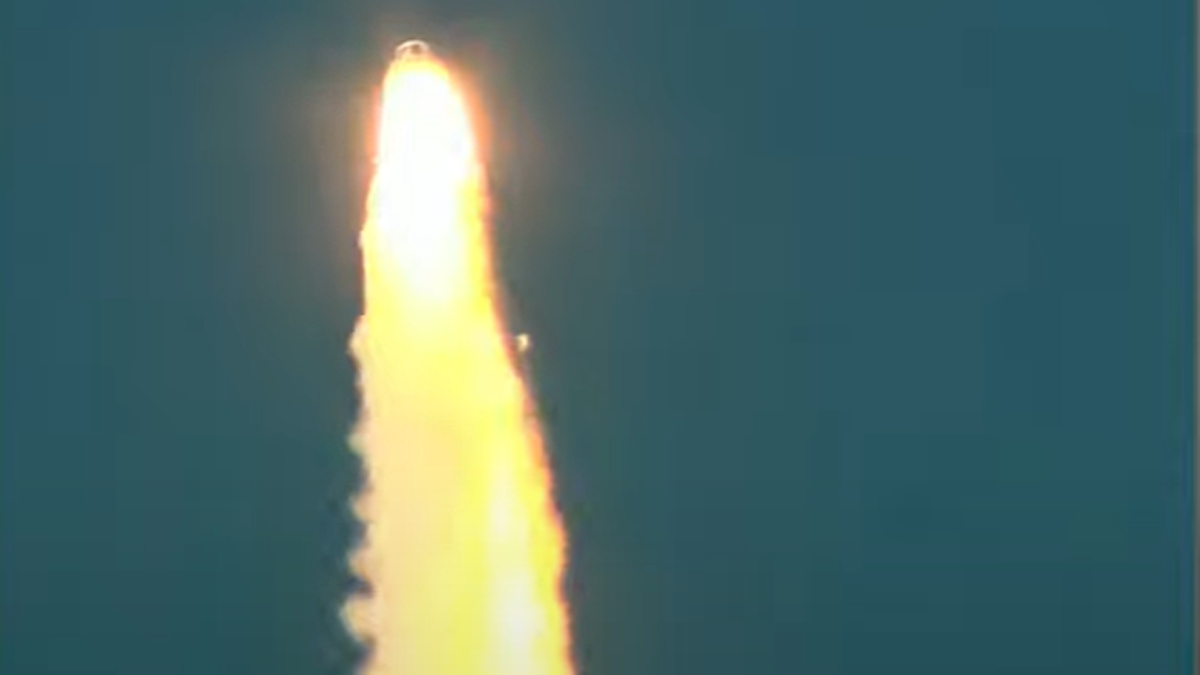Blue Origin still investigating New Shepard failure 6 months later

Blue Origin's New Shepard has now been grounded for almost six months, and it's unclear when the suborbital space-tourism vehicle will take to the skies again.
New Shepard suffered an anomaly during its most recent flight, an uncrewed research mission that lifted off on Sept. 12, 2022. New Shepard's reusable first-stage booster was lost as a result, though the upper-stage capsule managed to land safely under parachutes.
Blue Origin hasn't provided many updates about the anomaly since then. But that may be because there still isn't much to say; the company continues to probe the failure, SpaceNews' Jeff Foust reported earlier this week.
"We are investigating that anomaly now, the cause of it," Blue Origin's Gary Lai, chief architect for New Shepard, said on Tuesday (Feb. 28) at the Next-Generation Suborbital Researchers Conference in Colorado, Foust wrote.
"We will get to the bottom of it," Lai added. "I can't talk about specific timelines or plans for when we will resolve that situation, other than to say that we fully intend to be back in business as soon as we are ready."
Related: Failure of Blue Origin's New Shepard a reminder that spaceflight is still hard
The Sept. 12 mission — called NS-23 because it was the 23rd flight overall for New Shepard — aimed to carry 36 payloads on a brief trip to suborbital space and back.
Breaking space news, the latest updates on rocket launches, skywatching events and more!
But something unexpected happened about 65 seconds after liftoff, which occurred from Blue Origin's West Texas site. New Shepard's booster hit the ground hard and was presumably destroyed, but the capsule activated its emergency escape system and returned safely to Earth.
"I can tell you with certainty that the acceleration environment that we experienced was exactly what we predicted. It was exactly as the astronauts were trained for," Lai said of the capsule's emergency-abort performance, according to Foust. "Everything went according to plan."
It was the second in-flight anomaly for New Shepard, after one that occurred on the vehicle's debut launch in 2015. On that occasion, the booster crash-landed and was destroyed, but the capsule managed to reach suborbital space as planned.
Six of New Shepard's 23 missions to date have been crewed. The first of these passenger flights lifted off in July 2021, carrying Blue Origin founder Jeff Bezos and three other people to suborbital space and back. The most recent crewed flight occurred in August of last year.
New Shepard flights are brief, lasting just 10 to 12 minutes from liftoff to capsule touchdown. But a lot of action is packed into that window; passengers get to experience a few minutes of weightlessness, for example, and see the curve of Earth against the blackness of space. Blue Origin has not disclosed how much it charges for a seat on the vehicle.
Blue Origin has used different New Shepard vehicles for crewed versus uncrewed flights. All six passenger missions have employed the New Shepard RSS First Step, whereas the recent payload-only jaunts used the RSS H.G. Wells.
Mike Wall is the author of "Out There" (Grand Central Publishing, 2018; illustrated by Karl Tate), a book about the search for alien life. Follow him on Twitter @michaeldwall. Follow us on Twitter @Spacedotcom or Facebook.

Michael Wall is a Senior Space Writer with Space.com and joined the team in 2010. He primarily covers exoplanets, spaceflight and military space, but has been known to dabble in the space art beat. His book about the search for alien life, "Out There," was published on Nov. 13, 2018. Before becoming a science writer, Michael worked as a herpetologist and wildlife biologist. He has a Ph.D. in evolutionary biology from the University of Sydney, Australia, a bachelor's degree from the University of Arizona, and a graduate certificate in science writing from the University of California, Santa Cruz. To find out what his latest project is, you can follow Michael on Twitter.
